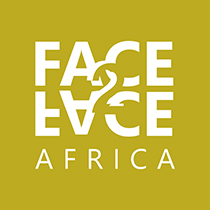The rich writings of the magnificent civilization of ancient Egypt have until now been incomprehensible, unavailable, or totally removed from the general public, aside from a few archaeologists or scholars of ancient texts. Soon, however, they will be made available and comprehensible to the average reader of the English language.
A Guardian UK report says that Cambridge scholar Toby Wilkinson has embarked on the monumental task of translating the bulk of ancient Egyptian texts known as hieroglyphic writings into an anthology written in modern English. Wilkinson, an Egyptologist, says he wants to make the writings, wisdom, and amazing literary sophistication of the ancient Egyptians available to the general reader. His anthology, titled “Writings from Ancient Egypt,” is scheduled for release today by Penguin Classics.
Wilkinson’s work is apt and perhaps long overdue. It is intriguing that while there have been multiple modern translations of texts from ancient European civilizations (Greek and Latin) as well as ancient Asian and Middle Eastern civilizations (Chinese and Sumerian), very little effort or interest has been invested into translating the ancient African (Egyptian) texts from the world’s oldest civilization into modern, everyday English.

An adobe tablet with ancient Egyptian (hieroglyphic) writings inscribed on its surface. Ancient Egypt
While there have no doubt been feverish displays of interest from academics in all things Egyptian, sadly most of that interest has been limited to the artifacts, treasures and monuments of the ancient pharaohs, the astonishing pyramids of Giza, the inconceivably well-preserved Egyptian mummies, and the magnificent treasures in the royal burial chambers.
Most of the curiosity about ancient Egyptians seems to conveniently ignore the inta0ngibles like literature, which Wilkinson describes as “the life of the mind, as expressed in the written word.”
Exploring the writings of any civilization is perhaps the best route of grasping a detailed insight into their world or catching a glimpse of life as they saw it. So far, however, it appears that mainstream interest in the ancient Egyptians’ literary compositions has been limited mostly to deciphering the location of hidden treasures or plundering the ancient land of its riches.

Crystal Links
Ancient Egyptians invented the earliest alphabet around 3,500 BC using a system of writing known as hieroglyphs (Latin for scared writings), which continued to be an important form of writing for the next 3000 years. Hieroglyphs combine logographic and alphabetic elements. In their simplest form, they use pictographic symbols to represent spoken words.
The closest we have to hieroglyphs today is perhaps our use of emoticons to pepper or colour our online communication. But hieroglyphs were amazingly so well developed that they could convey subtle nuance and powerful metaphors.
Ancient Egyptian scribes typically made their hieroglyphic writings on papyrus scrolls, but hieroglyphs were often written on just about any surface. They have been found inscribed on walls, on tablets, and in the recesses of the tombs of ancient kings. Wilkinson says the writings of ancient Egyptians span the range of human interest, including business, poetry, satire, and even songs.
The ancient Egyptians were prolific writers and great thinkers. Wilkinson believes there is a certainly a new and intimate dimension to be added to what we already know about them from interacting with their written words. “What will surprise people are the insights behind the well-known facade of ancient Egypt, behind the image that everyone has of the pharaohs, Tutankhamun’s mask, and the pyramids,” he explains.
Wilkinson says it is quite regrettable that on occasion, even museums that are expected to know better have categorized and displayed hieroglyphic texts as artifacts instead of the manuscripts that they actually are. Hopefully, Wilkinson’s collection of ancient Egyptian writings will provide a refreshing narrative to the general public about the life and times of the great pharaohs and the people of ancient Egypt.










